Shashank Srikanth
Fast Adaptation of Manipulator Trajectories to Task Perturbation By Differentiating through the Optimal Solution
Nov 01, 2020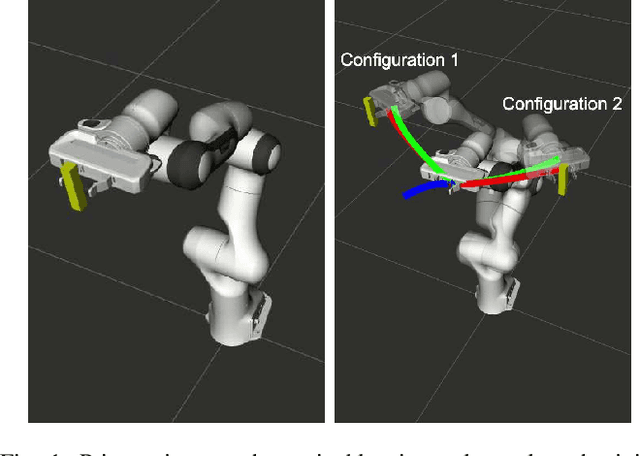

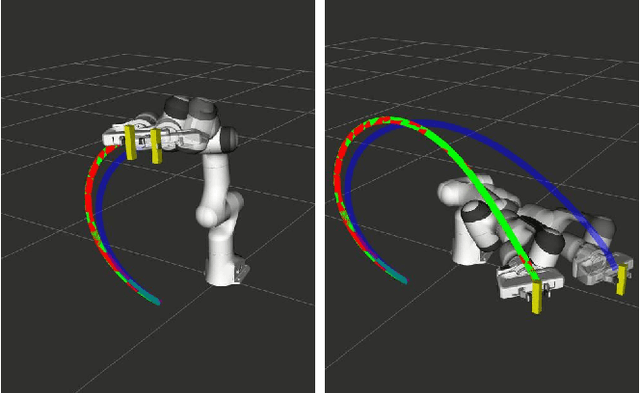
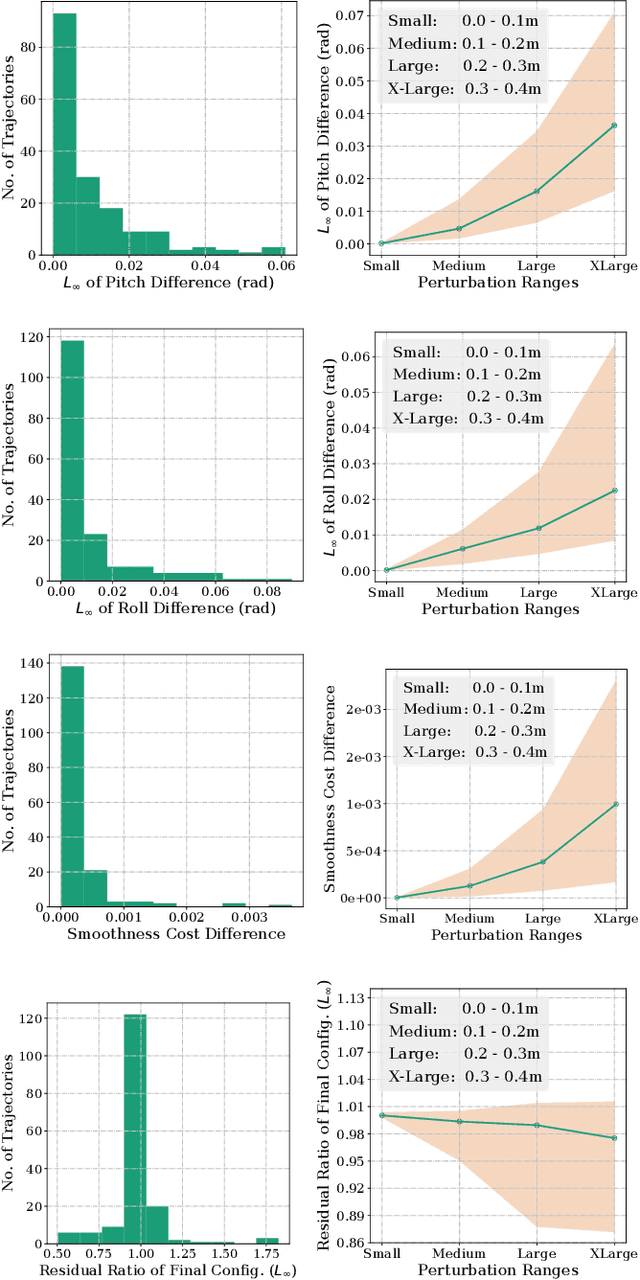
Abstract:Joint space trajectory optimization under end-effector task constraints leads to a challenging non-convex problem. Thus, a real-time adaptation of prior computed trajectories to perturbation in task constraints often becomes intractable. Existing works use the so-called warm-starting of trajectory optimization to improve computational performance. We present a fundamentally different approach that relies on deriving analytical gradients of the optimal solution with respect to the task constraint parameters. This gradient map characterizes the direction in which the prior computed joint trajectories need to be deformed to comply with the new task constraints. Subsequently, we develop an iterative line-search algorithm for computing the scale of deformation. Our algorithm provides near real-time adaptation of joint trajectories for a diverse class of task perturbations such as (i) changes in initial and final joint configurations of end-effector orientation-constrained trajectories and (ii) changes in end-effector goal or way-points under end-effector orientation constraints. We relate each of these examples to real-world applications ranging from learning from demonstration to obstacle avoidance. We also show that our algorithm produces trajectories with quality similar to what one would obtain by solving the trajectory optimization from scratch with warm-start initialization. But most importantly, our algorithm achieves a worst-case speed-up of 160x over the latter approach.
Is change the only constant? Profile change perspective on #LokSabhaElections2019
Sep 22, 2019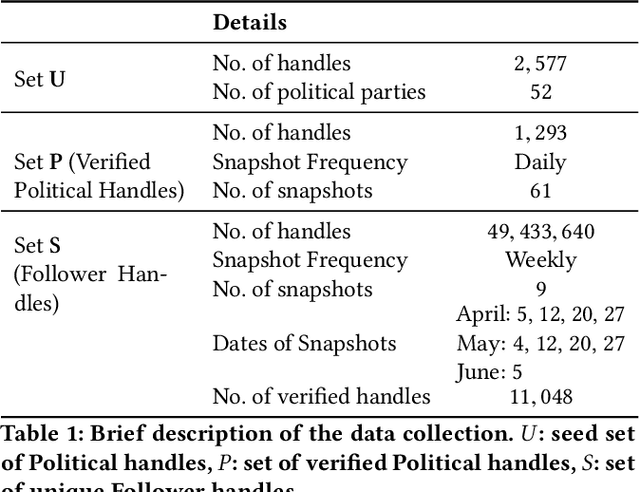


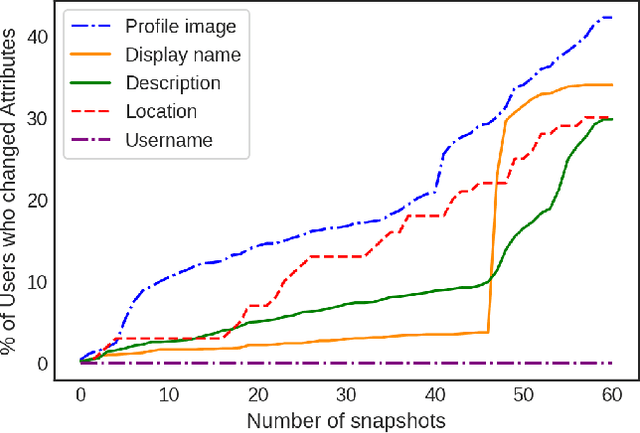
Abstract:Users on Twitter are identified with the help of their profile attributes that consists of username, display name, profile image, to name a few. The profile attributes that users adopt can reflect their interests, belief, or thematic inclinations. Literature has proposed the implications and significance of profile attribute change for a random population of users. However, the use of profile attribute for endorsements and to start a movement have been under-explored. In this work, we consider #LokSabhaElections2019 as a movement and perform a large-scale study of the profile of users who actively made changes to profile attributes centered around #LokSabhaElections2019. We collect the profile metadata for 49.4M users for a period of 2 months from April 5, 2019 to June 5, 2019 amid #LokSabhaElections2019. We investigate how the profile changes vary for the influential leaders and their followers over the social movement. We further differentiate the organic and inorganic ways to show the political inclination from the prism of profile changes. We report how the addition of election campaign related keywords lead to spread of behavior contagion and further investigate it with respect to "Chowkidar Movement" in detail.
INFER: INtermediate representations for FuturE pRediction
Mar 26, 2019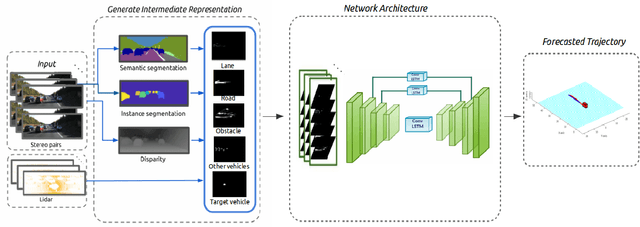
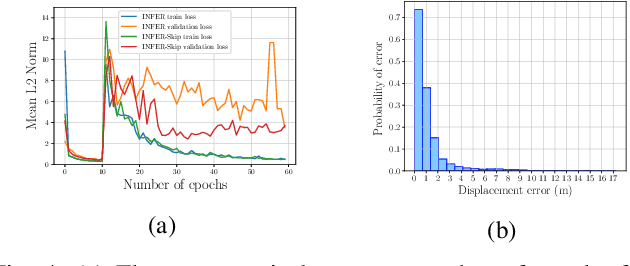

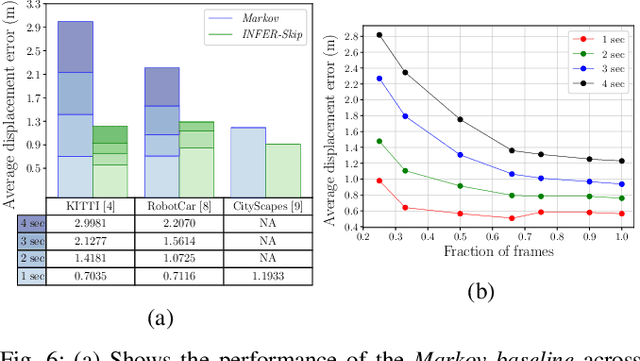
Abstract:In urban driving scenarios, forecasting future trajectories of surrounding vehicles is of paramount importance. While several approaches for the problem have been proposed, the best-performing ones tend to require extremely detailed input representations (eg. image sequences). But, such methods do not generalize to datasets they have not been trained on. We propose intermediate representations that are particularly well-suited for future prediction. As opposed to using texture (color) information, we rely on semantics and train an autoregressive model to accurately predict future trajectories of traffic participants (vehicles) (see fig. above). We demonstrate that using semantics provides a significant boost over techniques that operate over raw pixel intensities/disparities. Uncharacteristic of state-of-the-art approaches, our representations and models generalize to completely different datasets, collected across several cities, and also across countries where people drive on opposite sides of the road (left-handed vs right-handed driving). Additionally, we demonstrate an application of our approach in multi-object tracking (data association). To foster further research in transferrable representations and ensure reproducibility, we release all our code and data.
 Add to Chrome
Add to Chrome Add to Firefox
Add to Firefox Add to Edge
Add to Edge